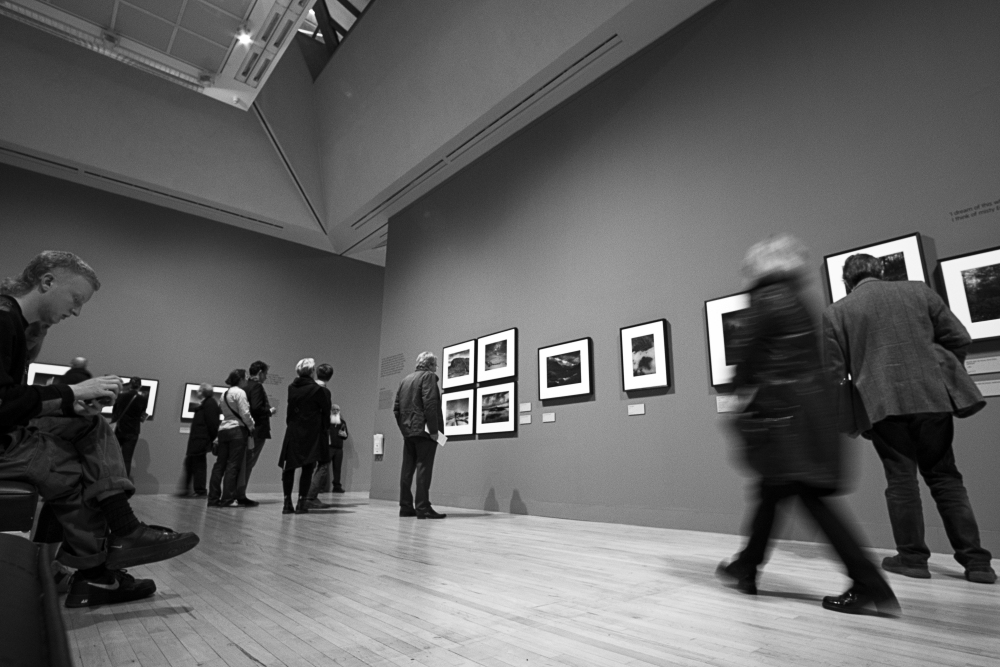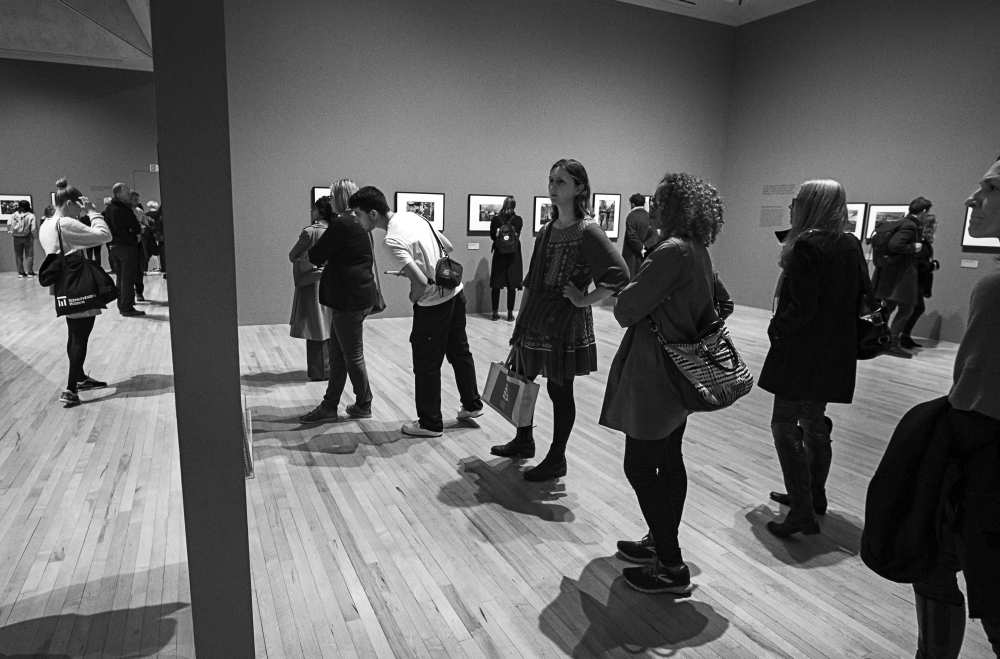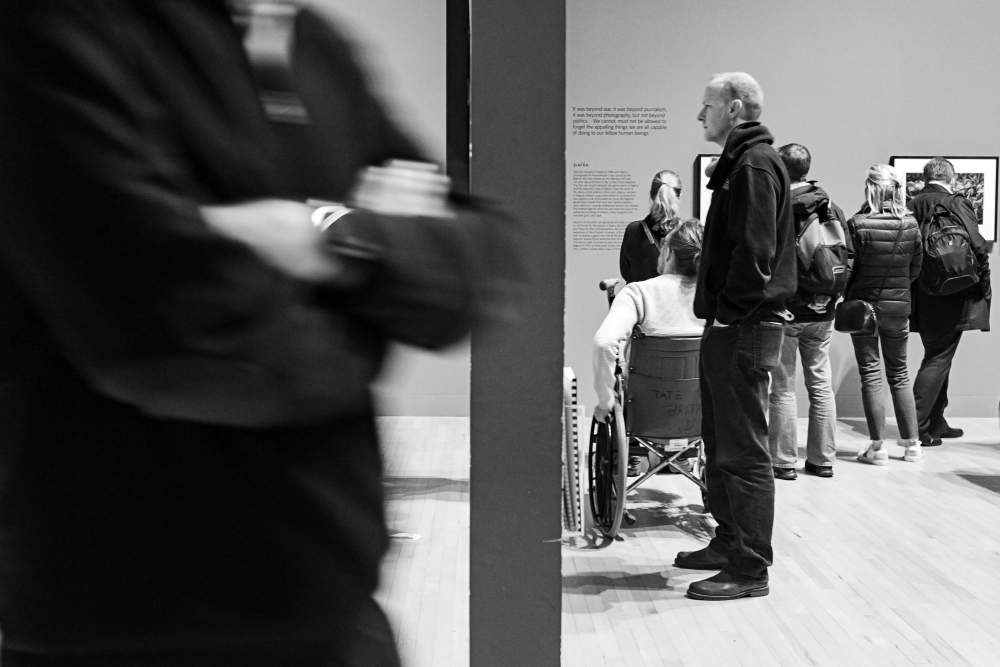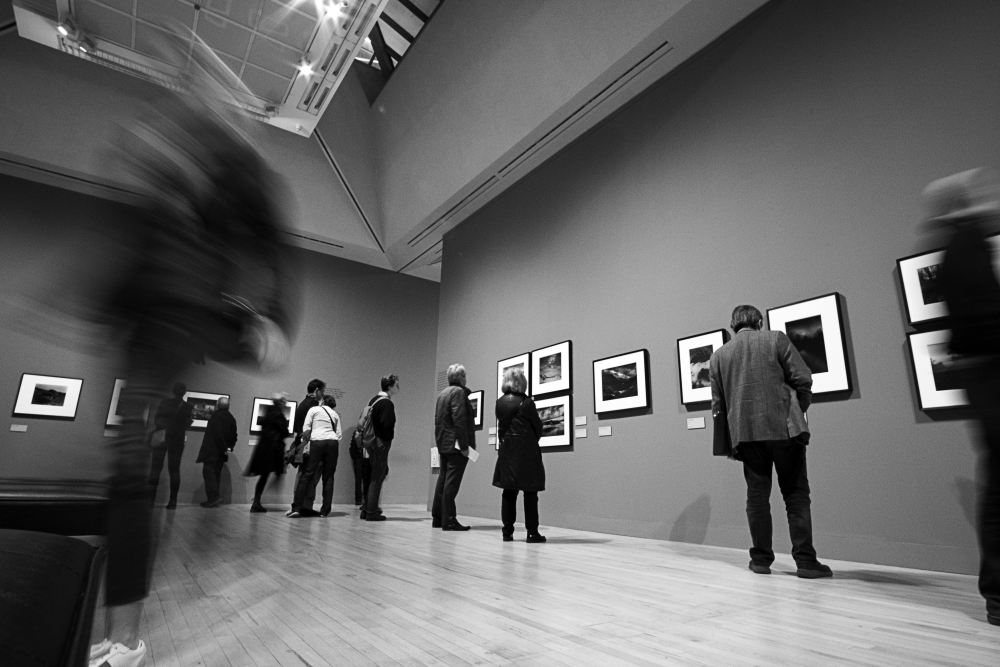Sir Don McCullin Experience
by Robert Bnnister
Photography isn’t about seeing, it’s about feeling. If I don’t have some kind of feeling for what I’m shooting, how can I expect the person who looks at it to feel anything?
Don McCullin
I found Sir Don McCullin by chance, a little bit like as he says “photography found him”
I had been to the Media Centre in Bradford and if you have not been there before, I can definitely recommend it. On a few floors, photography and cinematography is presented throughout the ages. There is even stage sets where you can play at being a cameraman, the images go straight to the television screens around the studios.
On the exit, I wandered through the gift shop, perusing the photography books. I was stopped in my tracks by the ‘thousand yard staring’, shell shocked marine. I then found myself browsing away time, in the dark world that is and was Sir Don McCullin. I say dark world, because of the trauma he has had to live with and the underexposed images that he produces to reflect this.
Staring Back US Marine Hue 1968
I did not buy the book at the time, unfolding my pockets to find a dusty segment of chewing gum, string and a screwed up tissue, which had probably been there since Hasselblad had come on the scene. Needless to say not many coins, so I digested as much material to my memory banks as possible and headed for the door.
Although my main passion is street photography rather than photo journalism, I did find that in the early part of Sir Don McCullin’s career, it was actually street styled journalism. The impact and realism certainly would have made you splutter your tea as you opened the pages of the Sunday Times magazine. It undoubtedly made me realise that reality in black and white was the way to go for impact, mood and soul. Black and white is a favourite format of Sir Don for similar reasons.
I read recently the updated memoirs of Sir Don McCullin, ‘Unreasonable Behaviour’ This again I can recommend, it will keep you rivetted to the tale of a man who was born out of Hitler’s bombings to dodging bullets through countless war zones. It leaves you exhausted by the social depravation in Britain during the seventies and places like the disease ravaged Bangladesh.
Although Sir Don McCullin does not like to be known as a war photographer, it is evident he witnessed the sickening brutality one human can inflict on another around the globe.
Beirut In Flames
During the festive period, I was gifted the signed first edition of the book I had seen in the media museum, simply called Don McCullin with the US staring Marine as cover. I used this book hand in hand as a reference with ‘Unreasonable Behaviour’ it blew my mind away and it begged the question why his hadn’t literally been blown away.
Synchronicity seemed to be afoot as I finished the books, a programme came on BBC 4 called ‘Finding Britain’ Sir Don was retracing steps of images he had taken in his early photojournalistic career around Britain. But now he was photographing again as a street photographer. The programme had been released in conjunction with an exhibition of his works at the Tate Britain in London. Synchronicity indeed, and I had to go.
I purchased my ticket and asked the question if I could bring my cameras, to record the impact on the faces of the Sir Don McCullin pilgrimage. The response was that photography was permitted as long as flash was not used, so I was pleased and ready to attend. From a street perspective in a public domain, I wanted to give the viewer a taste of the impact the photo journalist could have.
I arrived at the Tate Britain with my X100s and X-T2 cameras, excited yet reticent. I gave my ticket to the smiling curator who in turn pushed the content warning signed door ajar. A warning for good reason, the modern interior and halogen lights doing nothing to lift the mood of what was to come. Even though I had seen most of the images in books before, there was something different about consistently sized images presented in their categories of horror. It was like wandering along a train carriage, looking out at the scenery of carnage created by man. In between the images, quotes adorned the walls of thoughts from the voyeur that was there.
Content Warning
All the images processed by the man himself in his ironic escape from the outside world , underexposed admittedly to show the viewer the darkness Sir Don McCullin has had to endure after the abhorrence he has seen. The images were all framed similarly in black frames and about A3 size with white card borders, complimenting the intense black and white images.
As you looked at the imploring eyes from around the world, one could only stare back as a bilious nausea consumed your very being. If only it would have the same effect on the worlds political leaders. I watched and clicked, as the public in a trans like state shuffled past the images, original magazines, slide show and quotes on the wall. They all leaned into the images, clinging to invisible handrails, so as not to fall into the sickening trauma. The only respite were the landscapes, yet still dark and foreboding. Ironically his street photography of typical Brits by the seaside, reminded me of why I prefer this genre to photo journalism. As a street photographer the only conflict we really know, is the occasional demand to delete an image. Why should we be scared? I looked at these historical shots as I am sure most did and wondered how the images were not afflicted by camera shake, even at the highest shutter speeds.





The gallery visitors, their eyes widening from image to image as if hearing the desperate silence of the stills, reading the quotes and helpless to do anything, as indeed was the recorder of time. As a street photographer you can learn a lot as our genres cross paths, stories, impact and composition, presenting that moment in time. Also a return to analogue imagery can teach us a thing or two about making each photograph count. Under fire, Sir Don was known to take light meter readings, proffering the philosophy, and I paraphrase ” what is the point of being dead, if the images you have died for are poorly exposed”
I know the life works of Sir Don McCullin or any other photo journalist, ideally would stop man from doing this cruelty ever again. The darkroom continues to beckon, in the hope that further copies will have just that effect. I have my doubts, but those moments as ours are recorded for future generations to see.
I exited the adjoining galleries after getting my series of images, to buy a catalogue of the exhibited work. The lady at the till asked if I would like a carrier bag, I duly accepted and she popped the book in upside down. Spookily a sign came back to me, the word ‘NO’ through the plastic was all I could see. Take from that, what you will.
Photographers can learn a lot from exhibitions around the world, let us hope the world learns a lot from the photographer.
Sir Don McCullin Chronology taken from the exhibition catalogue.
1935 McCullin is born
1958 McCullin photographs The Guv’nors in a bombed out building, leading to work for the Observer.
2017 McCullin is knighted in the new year honours for services to photography.
The years between are left to his nightmares and posterity.
donations are welcome to Progressive Street





























